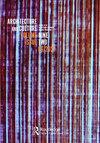欧洲城市的缺席空间:将城市基础设施与当代集体生活相结合
IF 1.8
0 ARCHITECTURE
引用次数: 0
摘要
本文考察了欧洲城市中经常被定义为外围、空旷和缺席的空间。库哈斯在接受汉斯·乌尔里希·奥布里斯特(Hans Ulrich Obrist)采访时定义的“缺席空间”,由于其历史的原因,可以有更强的存在感,就像柏林墙一样,产生一种独特的状态。在空旷的城市中心或城郊,它们往往会有机地进化。本文以马德里和罗马为重点,首先提出重新审视Stefano Boeri在L 'anticitta(或the antiticity)、“地形模糊”或荒地(Ignasi de Sol a-Morales)遗址和Marc Aug e的Non-place(s)中的外围遗址的意义。其次,它使用视觉文章来思考这三种类型的缺席空间在欧洲城市中的关键作用,并认为它们所包含的缺席属性可以反过来通过将城市基础设施和日常集体生活拼接在一起来创造城市存在。在一次与Hans Ulrich Obrist的访谈中,Rem Koolhaas解释道:建筑与文化Alona Martinez Perez Leicester建筑学院,De Montfort University, Leicester, UK alona.martinezperez@dmu。ac.uk本文章由计算机程序翻译,如有差异,请以英文原文为准。
Spaces of Absence in the European City: Stitching Urban Infrastructure to Contemporary Collective Life
This paper examines spaces in the European City that are often defined as peripheral, empty and absent. “Spaces of absence” – as Koolhaas defined them in an interview with Hans Ulrich Obrist – can have a stronger presence as a consequence of their history and, like the Berlin wall, generate a unique condition. In an empty city center or on city outskirts they often evolve organically. Focusing on Madrid and Rome, this paper first, proposes to re-visit the significance of Stefano Boeri’s peripheral sites in L’anticitta (or The Anticity), “terrain vague” or waste ground (Ignasi de Sol a-Morales) sites and Marc Aug e’s Non-place(s). Second, it uses the visual essay to contemplate the critical role that these three types of spaces of absence can have in the European city and argues that the very attribute of absence that they contain can, conversely, create urban presence by stitching together urban infrastructure and everyday collective life. Introduction: Spaces of Absence In an interview conversation with Hans Ulrich Obrist, Rem Koolhaas explains that: ARCHITECTURE AND CULTURE Alona Martinez Perez Leicester School of Architecture, De Montfort University, Leicester, UK alona.martinezperez@dmu. ac.uk
求助全文
通过发布文献求助,成功后即可免费获取论文全文。
去求助
来源期刊

Architecture and Culture
ARCHITECTURE-
CiteScore
0.80
自引率
0.00%
发文量
25
期刊介绍:
Architecture and Culture, the international award winning, peer-reviewed journal of the Architectural Humanities Research Association, investigates the relationship between architecture and the culture that shapes and is shaped by it. Whether culture is understood extensively, as shared experience of everyday life, or in terms of the rules and habits of different disciplinary practices, Architecture and Culture asks how architecture participates in and engages with it – and how both culture and architecture might be reciprocally transformed. Architecture and Culture publishes exploratory research that is purposively imaginative, rigorously speculative, visually and verbally stimulating. From architects, artists and urban designers, film-makers, animators and poets, from historians of culture and architecture, from geographers, anthropologists and other social scientists, from thinkers and writers of all kinds, established and new, it solicits essays, critical reviews, interviews, fictional narratives in both images and words, art and building projects, and design hypotheses. Architecture and Culture aims to promote a conversation between all those who are curious about what architecture might be and what it can do.
 求助内容:
求助内容: 应助结果提醒方式:
应助结果提醒方式:


